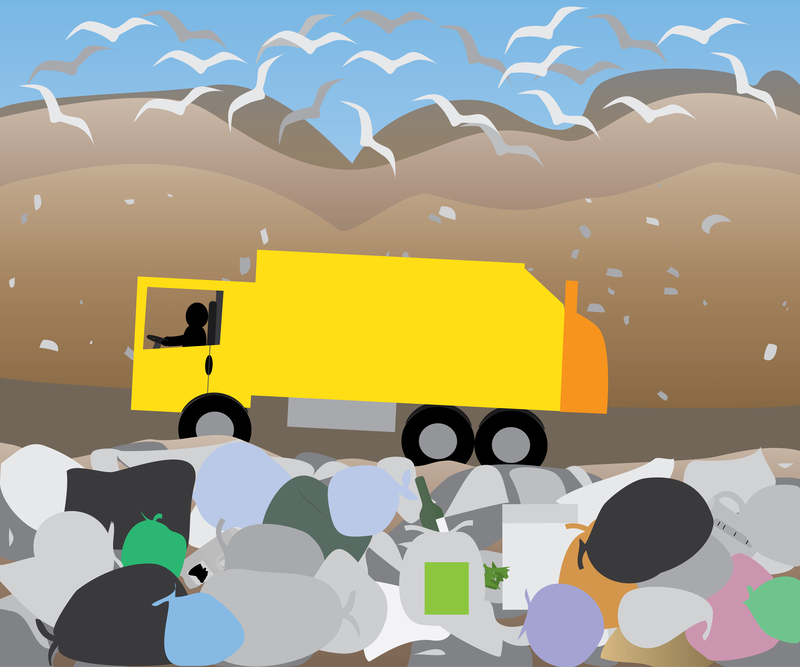Unlock Savings When Discarding Bulky Waste Items
Struggling to get rid of old furniture, appliances, or other large junk items? You're not alone. Disposing of bulky waste items can be costly and inconvenient if you don't know the right strategies. Fortunately, there are practical, eco-friendly, and budget-conscious methods available that can help you unlock savings when discarding bulky waste items.
Understanding Bulky Waste: What Is It?
Bulky waste, also known as large item waste, refers to items that are too big for regular curbside trash collection. These may include:
- Beds and mattresses
- Sofas and armchairs
- Refrigerators and other large appliances
- Carpets and rugs
- Garden equipment
- Bathtubs and bathroom fixtures
- Wardrobes and shelving units
Traditional disposal of such items often incurs significant costs. But did you know that by planning ahead and choosing the right approach, you can save money when discarding bulky items?

Why Does Bulky Item Disposal Cost So Much?
The expense comes from several factors:
- Transportation and loading fees
- Special handling or equipment
- Landfill tipping charges
- Potential environmental surcharges
- Labor if items must be carried out of the home
Many households accept these fees as inevitable, but with the right know-how, you can unlock savings and even benefit financially when discarding bulky waste items.
Smart Strategies to Unlock Savings When Discarding Bulky Waste Items
1. Try to Donate Usable Items
Before you pay for bulk trash collection, ask yourself: Is my item still useful? Lots of non-profits and charities accept gently used furniture, appliances, and more. Many even offer free pick-up services, meaning you can save the cost of hauling, and prevent useful items from ending up in a landfill.
- Contact local thrift stores, shelters, or community centers.
- Check if your items match their donations criteria.
- Book a pick-up in advance to align with your moving or remodeling schedule.
Bonus: In some countries, donation receipts can give you a tax deduction, adding to your savings.
2. Resell Through Online Platforms
Not only do you avoid disposal costs, but you can actually make money from your unwanted bulky items. Online marketplaces abound:
- Facebook Marketplace
- Craigslist
- OfferUp
- Nextdoor
- eBay (for certain items)
Take clear photos, write honest descriptions, and price competitively. Many buyers will pick up items directly from your home, saving you time and money.
3. Check for Local Council or Municipal Bulk Pickup Days
Many cities or counties offer scheduled free bulky waste collection days--monthly, quarterly, or by appointment. Take advantage of these services to unlock cost savings on large item disposal.
- Search your municipality's website for "bulky waste collection" or "large item pick-up."
- Follow guidelines for preparation (e.g., items must be curbside by a certain time).
- Book appointments early--slots can fill quickly.
4. Utilize Public Drop-Off Sites and Recycling Centers
Most communities run waste transfer stations or recycling centers where you can drop off large items for a fraction of the cost of private disposal services. Some states offer discounts or free drop-off for residents.
- Search online for your nearest facility and acceptable items list.
- Plan your trip -- some centers require proof of residency or charge by item/material.
- Consider sharing the trip with neighbors to split transportation costs.
5. Split Costs with Neighbors
If you hire a junk removal company, ask your neighbors if they have bulky waste for pickup. Most services charge by volume or trip, so consolidating loads means everyone can save money on bulky item disposal.
- Choose a trusted, reputable company with transparent pricing.
- Sort and stack items in advance for easy loading.
- Negotiate group discounts where possible.
6. DIY Demolition and Dismantling
Large items such as wardrobes, couches, or play sets often incur higher removal fees due to their size. By dismantling them yourself, you may fit them in your regular trash or recycling bins, or at least end up paying less at the dump due to reduced volume.
- Remove screws, hinges, and bolts--break down items to their smallest components.
- Be sure to comply with local recycling rules (e.g., keep wood and metal separate).
- Stay safe--use proper tools and protect yourself with gloves and goggles.
7. Invest in Multi-Use Dumpsters (for Remodels or Large Cleanouts)
Planning a renovation or large decluttering project? Renting a multi-use dumpster can be more cost-effective than multiple trips to the dump or hiring a junk removal service for each large item. Compare sizes and rental periods to maximize savings.
- Factor in delivery, pickup, and landfill charges when comparing quotes.
- Ensure bulky waste items are allowed--some dumpsters prohibit certain electronics, mattresses, or appliances.
- Load strategically to maximize space and minimize air gaps.
Unlocking Bonus Savings: Environmental and Community Benefits
Discarding bulky items responsibly isn't just about saving money--it's about making a positive impact. Here's how:
- Reduce landfill waste: Every item diverted from landfill conserves valuable space and reduces future costs.
- Encourage recycling: Large appliances contain metals and components that can be reused, cutting resource demands.
- Support your community: Donating or selling usable items helps families in need or local charities.
By unlocking savings when discarding bulky waste, you also unlock real value for your environment and neighbors.
Common Mistakes to Avoid When Disposing of Large Items
- Dumping illegally: Many cities levy heavy fines for abandoning large items in unauthorized places. Legal disposal is always more affordable in the long run.
- Ignoring hazardous waste rules: Items like refrigerators, electronics, and some mattresses require special handling--ignoring this can result in penalties.
- Overlooking recycled materials: Many items contain recyclable parts--don't miss out on potential rebates!
How to Prepare Bulky Waste for Affordable Disposal
- Empty and clean appliances to avoid extra charges and prevent mess.
- Separate recyclable materials (metal, glass, wood) from general waste.
- Remove doors from fridges/freezers for safety, as required by many municipal codes.
- Download and print any necessary permits or stickers before visiting drop-off centers.

FAQ: Unlocking Savings on Bulky Waste Disposal
Q: Are there services that pick up bulky items for free?
A: Yes, many local governments, charities, and even some recyclers will collect specific bulky items at no charge. Always check for local options before paying.
Q: How can I find recycling rebates for bulk waste?
A: Appliance and electronics manufacturers often offer take-back programs and incentives. Local recycling centers may also pay for scrap metals or components.
Q: What items are not accepted for curbside bulk collection?
A: Rules vary, but most programs avoid hazardous waste, automotive parts, construction rubble, and some electronics. Always review local guidelines.
Q: How do I save on waste disposal during a home renovation?
A: Plan ahead by renting the right dumpster size, recycling what you can, and sharing costs with suppliers or neighbors undertaking similar projects.
Conclusion: Save More, Waste Less
The next time you face the challenge of discarding an old mattress, broken armchair, or non-working appliance, remember: you can unlock savings when discarding bulky waste items by thinking creatively and acting responsibly. Whether you choose to donate, resell, recycle, or take advantage of community programs, being proactive can keep both your wallet and your environment healthier.
Make a plan, maximize community resources, and discover just how easy it is to save money while discarding bulky waste items today.
